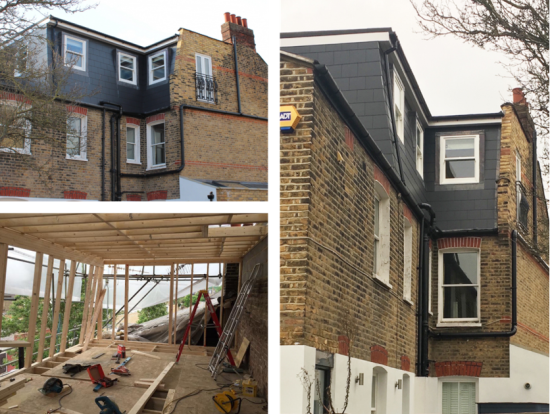Policy HO2
Housing conversion and retention
The council will:
- Permit conversions of existing dwellings into two or more dwellings where:
a) the net floor area of the dwelling as originally constructed is more than 130m2
b) it can be clearly demonstrated that the existing dwelling is unsuitable as a family dwelling
c) at least 50% of the proposed units consist of two or more bedrooms
d) housing appropriate for families has access to a garden or amenity space; and
e) there is no adverse impact on on-street parking stress.
- Resist proposals which would result in a net loss of permanent residential accommodation as a result of redevelopment or change of use without replacement (measured by floorspace), including to short stay accommodation.
- In streets where there is less than 10% night-time free space the number of additional dwellings may be restricted or conditioned to allow no additional on-street parking. The council may seek a legal agreement to restrict application for parking permits.
- Amalgamations of existing dwellings will only be permitted where a family home is reinstated. Amalgamations which result in a single dwelling exceeding 130sqm will not be permitted. It will not be permitted for amalgamations to result in the loss of more than one unit of 2 bedrooms or more.
4.14 In order to achieve the council's housing target of an additional 1,609 dwellings per annum, it is important that as well as provision of new housing there should be no net loss of the existing housing stock through change of use or redevelopment for other uses.
Housing conversion criteria

4.15 In applying this policy to existing dwellings, the types of dwellings covered by the policy includes but is not limited to, houses, purpose-built maisonettes and duplex dwellings. These typologies in the borough provide a source of accommodation suitable for families and it is important to ensure that this stock is not unduly reduced because of conversion into flats or larger Houses of Multiple Occupation (HMOs).
4.16 'As originally constructed' refers to the floor area of the property prior to any extensions being carried out. Extensions carried out pre-1948 can be included in the original floor area. Attempts to circumvent this policy, including through the reconfiguration of the internal layout of the property, will not be permitted.
4.17 The requirement for at least 50% of the proposed units in conversions to be of two or more bedrooms will allow for the retention of a mix of units offering the possibility of accommodation to be provided for smaller families. Larger schemes will allow for a possible net increase in the amount of family sized accommodation in the borough.
4.18 Some areas of the borough are likely to be considered less suitable for family accommodation, including areas adjacent to busy roads where there is little opportunity to provide amenity space, in town centres or where there are residential premises above shops. In these instances, there will be more flexibility in the approach to conversions, although each case will be assessed on a site-by-site basis.
4.19 Because conversions can give rise to a demand for additional on-street parking space, it will be important to ensure that parking stress is not exacerbated. In streets where there is less than 10% night-time free space, the number of additional dwellings may be restricted or conditioned to allow no additional on-street parking. The Council may seek a legal agreement to restrict the application for parking permits, in compliance with Local Plan Policy T4.
Loss of housing
4.20 The loss of existing housing, particularly affordable housing, will be resisted unless the housing is replaced at existing or higher densities with at least equivalent floorspace in accordance with the London Plan. Short stay accommodation (defined as housing let for a cumulative period of more than 90 days in a year) is primarily intended for visitors and does not meet the need for additional permanent housing in London and will be resisted.
Amalgamations and deconversions
4.21 The amalgamation or deconversion of properties that currently provide two or more self-contained dwellings results in the net loss of permanent residential accommodation. Flats, such as those which have come about through conversions, are particularly important in providing homes for smaller households and offering a more affordable alternative to houses. The Council will therefore seek to protect this form of accommodation and will resist proposals that would result in its loss. Given the need to retain existing housing, proposals for amalgamations and deconversions will only be supported where they demonstrably reinstate a family-sized home. To prevent the creation of larger dwellings that do not reflect the borough's housing requirements, amalgamations will not be permitted where the gross internal area (GIA) of the resulting dwelling would exceed 130 sqm. The Council's LHNA identifies a significant demand for 2 and 3-bedroom market homes. It is therefore important to retain the existing stock of such properties. Amalgamations that would result in the loss of more than one unit containing two bedrooms or more will not be permitted, in order to safeguard the availability of this housing stock.
4.22 As originally constructed - This refers to the floor area of the property prior to any extensions being carried out. Extensions carried out pre-1948 can be included in the original floor area. Parts of the dwelling that were not originally habitable rooms (for example lofts, cellars and garages) would not be included for the purposes of calculating the original floor area. This calculation excludes the area of outside walls but includes inside walls, partitions, cupboards and chimney breasts. Only the floor space of rooms with an existing headroom exceeding 2 metres in height is counted.